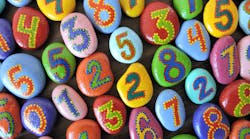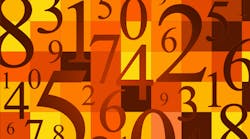The ADA’s Code Maintenance Committee (CMC) meets in March at the ADA headquarters in Chicago to review and discuss code action requests submitted by dental professionals. Each submission is then voted on by the CMC representatives and, if passed, is in the CDT Manual the following year.
The DentalCodeology Consortium (DCC) is a group of hygienists whose seven directors meet monthly and whose mission is “to influence the creation, definition, and maintenance of dental diagnostic and procedure codes.” Their Facebook page boasts 2,600 hygienists from across the country. These hygienists are invited to provide the directors with ideas for new, amended, or deleted procedure codes to present to the CMC each year. Hygienists can also ask procedure coding questions and receive reliable answers.
To date, the DCC has submitted and influenced 11 significant additions and changes to the CDT Manual procedure codes, five of them at this year’s meeting! These procedure codes will be included in the CDT 2025 Manual. Here are the five procedure codes.
Implant maintenance (two amended codes D6080 and D6081, one new code)
Currently there are only two procedure codes that can be used for implant maintenance (see CDT 2024, p. 57):
D6080: Implant maintenance procedures when prostheses are removed and reinserted, including cleansing of prostheses and abutments.
Descriptor: This procedure includes active debriding of the implant(s) and examination of all aspects of the implant system(s), including the occlusion and stability of the superstructure. The patient is instructed in thorough daily cleansing of the implant(s). This is not a per implant code and is indicated for implant-supported fixed prosthesis.
D6081: Scaling and debridement in the presence of inflammation or mucositis or a single implant, including cleansing of the implant surfaces, without flap entry and closure.
Descriptor: This procedure is not performed in conjunction with D1110, D4910, or D4346.
The problem with D6080: The nomenclature limits this to prostheses that are removed and reinserted, a procedure that takes a significant amount of time. There is no procedure code for prostheses that are not removed, which takes much less time.
Coming in January 2025: D6080 revised and one new procedure code
D6080: Implant maintenance procedures when a full arch fixed hybrid prosthesis is removed and reinserted, including cleansing of prostheses and abutments.
Descriptor: This procedure includes active debriding of the implant(s) and examination of all aspects of the implant system, including the occlusion and stability of the superstructure. The patient is also instructed in thorough daily cleansing of the implant(s).
DXXX (code assignments to come): Implant maintenance procedures when a full arch hybrid prosthesis is not removed, including cleansing of prostheses and abutments.
Descriptor: This procedure includes active debriding of the implant(s) and prosthesis. The patient is also instructed in thorough daily cleansing of the implant(s).
Currently there is one procedure code that can be used for treatment of implant mucositis (see CDT 2024, p. 57):
D6081: Scaling and debridement in the presence of inflammation or mucositis of a single implant, including cleaning of the implant surfaces, without flap entry and closure.
Descriptor: This procedure is not performed in conjunction with D1110, D4910, or D4346.
The problem with D6081: The nomenclature needed more clarity. In addition, the DCC felt there was no logical reason to treat any implant mucositis at a separate appointment when a patient was already in the chair having a D1110, D4910, or D4346. What would be the biological rationale? What rationale could be used in a court of law for making the patient return later?
Coming in January 2025: D6081 nomenclature revised
(Note: We were not successful in deleting the descriptor and no rationale was given when we received the final notice of action.)
D6081: Scaling and debridement of a single implant in the presence of mucositis, including inflammation, bleeding upon probing, and increased pocket depths. Includes cleaning the implant surfaces without flap entry and closure.
Descriptor: This procedure is not performed in conjunction with D1110, D4910, or D4346.
Dermal fillers and neuromodulators (two new procedure codes)
During the past several years, there have been more advances in dental and medical technology than in previous decades. Dermal fillers and neuromodulators are being used both cosmetically and therapeutically in the dental world. Each state has its own specifics as it relates to uses (cosmetic or therapeutic), education required, and who can administer. The ADA offers CE courses for these procedures.
The DCC submitted four code action requests. These included administration of dermal fillers for cosmetic purposes; administration of neuromodulators for cosmetic purposes—deep, nasolabial folds, radial lip lines, high lip lines, lip deformities, smile lines, and increase volume in papilla; administration of dermal fillers for therapeutic purposes; administration of neuromodulators for therapeutic purposes—TMJ disorders, mandibular muscle spasm, gummy smiles, masseter hypertrophy, and pathologic clenching and bruxism.
Coming in January 2025: Two new procedure codes with no descriptors
(Note: After a lengthy discussion by the CMC representatives and a lot of wordsmithing, they decided to keep it simple and create two procedure codes.)
DXXX: Administration of dermal fillers
Descriptor: None
DXXX: Administration of neuromodulators
Descriptor: None
There were other submissions related to dental hygiene practice that will be discussed in future issues. In the meantime, check out the DentalCodeology Consortium Facebook page to stay abreast of what this group is proposing for the meeting in March 2025.
There are workgroups starting to meet now to develop the submissions for next year, and anyone can be a part of a workgroup. Some of the suggestions the DCC are considering: resubmission of D2941 interim therapeutic restoration—primary dentition, which was deleted; new code for noninvasive chemical debridement (products such as PerioDT and Hybenx); revision of D4341/D4342 descriptor for SRP; new code for caries detection tests; and new code for application of caries medicament—whole mouth.
Editor's note: This article appeared in the July 2024 print edition of RDH magazine. Dental hygienists in North America are eligible for a complimentary print subscription. Sign up here.










